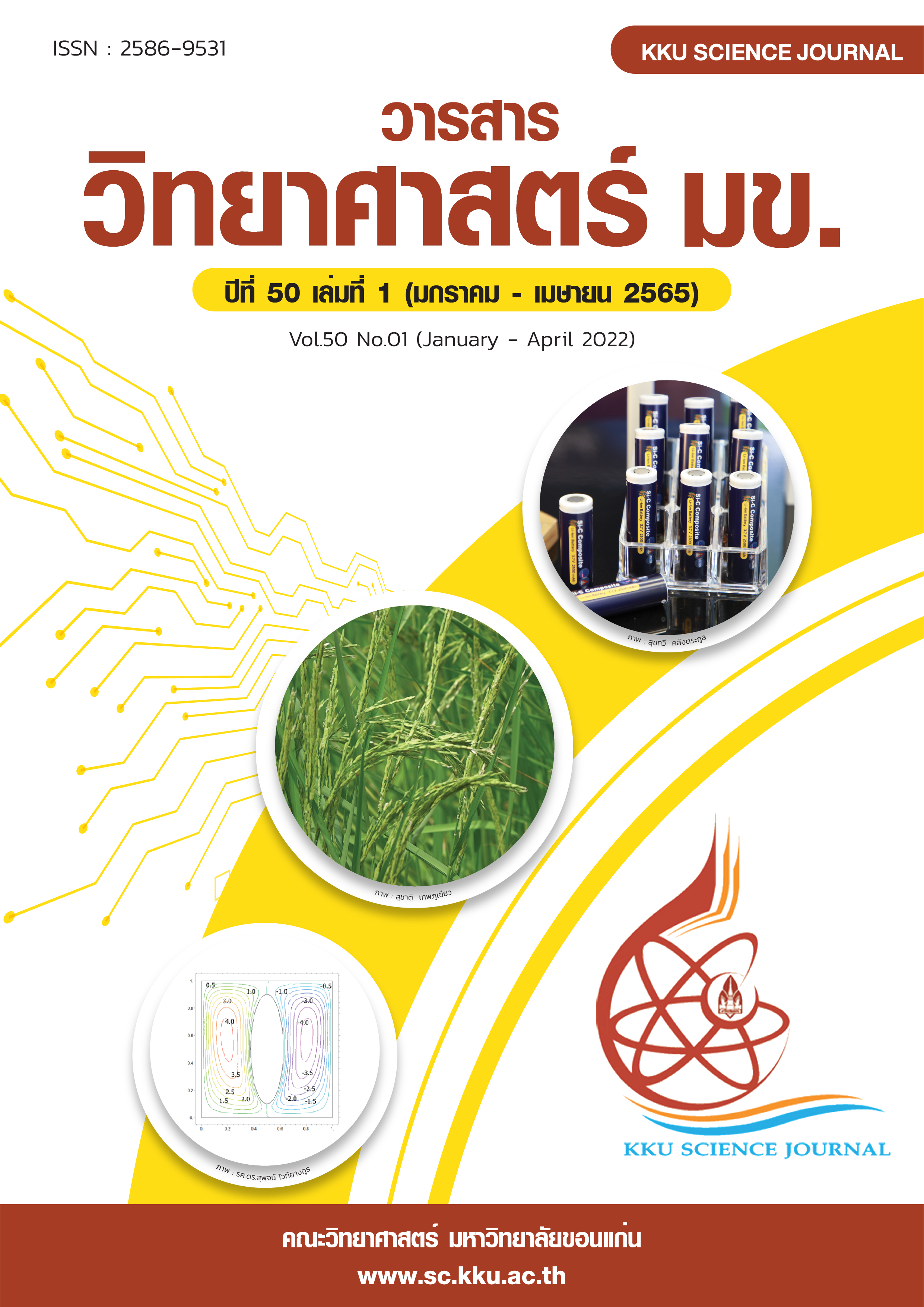Customer Analytics of Orchid Pot Business during the First Corona Virus Outbreak Period in Thailand
Main Article Content
Abstract
CORONA VIRUS 2019, also known as COVID-19, began to spread in December 2019. The first affected covid-19 person was found in Wuhan district, China, then COVID-19 impacted worldwide, including Thailand. This research uses the Data Mining technique by applying the Association Rule to understand customer behavior in people who buy orchid pots during the first coronavirus pandemic in Thailand. This study applies to the database of customer purchase transactions who buy orchid pots. This research adopts the FP-Growth model to understand the groups of products customers typically buy. Finally, the Association rule generates seven rules of orchid pot types that customers purchase in the same basket. Each rule shows Confidence, Lift, and Conviction range from 0.833 – 0.857, 2.629 – 5.602, 4.098 – 5.929, respectively. This study also deployed Predictive modeling by utilizing the Generalized linear model, Deep learning, Random Forest, and Gradient Boosted Tree. As a result of the Predictive model, Gradient Boosted Tree without Auto feature selection and feature extractions methods produce the lowest relative error at 15.2%. The association rule finds an orchid pot that customers purchased one of the items in the group. The expected result of this study is that orchid entrepreneurs can adopt this outcome from Association Rule and Predictive Modeling Analytics when a problematic situation similar to the COVID-19 pandemic happens again.
Article Details

This work is licensed under a Creative Commons Attribution-NonCommercial-NoDerivatives 4.0 International License.
References
Arora, P., Kumar, H. and Panigrahi, B.K. (2020). Prediction and analysis of COVID-19 positive cases using deep learning models: A descriptive case study of India. 139: 110017.
Berrar, D. (2018). Cross-validation. In Encyclopedia of Bioinformatics and Computational Biology: ABC of Bioinformatics 1(3): 542–545.
Bhatti, A., Akram, H., Basit, H.M., Khan, A.U., Mahwish, S., Naqvi, R. and Bilal, M. (2020). E-commerce trends during COVID-19 Pandemic. International Journal of Future Generation Communication and Networking 13(2): 1449–1452.
De, L.C., Kumar, R., Khan, A. and Medhi, R.P. (2019). Social Science Orchid Farming-A Remunerative Approach for Farmers Livelihood. International Journal of Scientific Research 3(9): 77-80.
Ebrahimi, M., Mohammadi-Dehcheshmeh, M., Ebrahimie, E. and Petrovski, K.R. (2019). Comprehensive analysis of machine learning models for prediction of sub-clinical mastitis: Deep Learning and Gradient-Boosted Trees outperform other models. Computers in Biology and Medicine 114.
Ghassani, F.Z., Jamaludin, A. and Irawan, A.Y. (2021). Market basket analysis using the fp-growth algorithm to determine cross-selling: Jurnal Informatika Polinema 7(4): 49-54.
Hussein, N., Alashqur, A., and Sowan, B. (2015). Using the interestingness measure lift to generate association rules. Journal of Advanced Computer Science and Technology 4(1): 156.
Khurana, K., and Sharma, M.S. (2013). A Comparative Analysis of Association Rules Mining Algorithms. International Journal of Scientific and Research Publications 3(5).
Kumar Jain, J., and Tiwari, N. (n.d.). A Survey: On Association Rule Mining. Manoj Ramaiya / International Journal of Engineering Research and Applications (IJERA) Www.Ijera.Com, 3: 2065–2069.
Pillai, A.R. and Jolhe, D.A. (2020) Market Basket Analysis: Case Study of a Supermarket. Advances in Mechanical Engineering pp 727–734.
Rygielski, C., Wang, J.C. and Yen, D.C. (2002). Data mining techniques for customer relationship management. In Technology in Society. 24(4): 483-502.
Sarkhel H. Ther Karim and Rzgar Sirwan (2019) A Data Mining Approach for Prediction Modeling Using Association rule. international journal on informatics visualization 3(3): 266-268.
Severyn, A., and Moschitti, A. (2013). Automatic Feature Engineering for Answer Selection and Extraction. In: Proceedings of the 2013 conference on Empirical methods in natural language processing. 458–467.
Shaikhina, T., Lowe, D., Daga, S., Briggs, D., Higgins, R. and Khovanova, N. (2019). Decision tree and random forest models for outcome prediction in antibody incompatible kidney transplantation. 52: 456–462.
Valdivia Miranda, C. (2014). Sistemas informáticos y redes locales : Sistemas de telecomunicaciones e informáticos, Electricidad y electrónica. Paraninfo.
Venkatesh, B. and Anuradha, J. (2019). A review of Feature Selection and its methods. Cybernetics and Information Technology 19(1): 3–26.
Vevea, J. L. and Hedges, L.V. (1995). A general linear model for estimating effect size in the presence of publication bias. Psychome trika 60(3): 419-435.
Wang, P., Tian, C., Liu, R. and Wang, J. (2019a). Mathematical model for multivariate nonlinear prediction of SMD of X-type swirl pressure nozzles. Process Safety and Environmental Protection 125: 228–237.
Wang, P., Tian, C., Liu, R., and Wang, J. (2019b). Mathematical model for multivariate nonlinear prediction of SMD of X-type swirl pressure nozzles. Process Safety and Environmental Protection 125: 228–237.
Wicaksono, D., Ihsan Jambak, M., and Saputra, D.M. (2020). The comparison of apriori algorithm with preprocessing and FP-growth algorithm for finding frequent data pattern in association rule. In: Proceedings of the Sriwijaya International Conference on Information Technology and Its Applications (SICONIAN 2019). 315-319.
Wongtanasarasin, W., Srisawang, T., Yothiya, W., and Phinyo, P. (2021). Impact of national lockdown towards emergency department visits and admission rates during the COVID-19 pandemic in Thailand: A hospital-based study. Emergency Medicine Australasia 33(2): 316–323.
Wu, P.J. and Lin, K.C. (2019). Unstructured big data analytics for retrieving e-commerce logistics knowledge: Telematics and Informatics 35(1): 237-244.
Žák, P., and Souček, M. (2019). Correlation of tumor necrosis factor alpha, interleukin 6 and interleukin 10 with blood pressure, risk of preeclampsia and low birth weight in gestational diabetes. Physiological Research 68(3): 395–408.


